OVERVIEW
From Abereiddy to Whitesands, this is one of the most dramatic stages. It has a deep sense of the past and the first signs of the lands of Ty Dewi (St David). Climbing away from Abereiddy beach, you will soon pass the last evidence of industrial quarries with fine views back to Abereiddy Bay. Walking along an undulating coast path you will pass through ancient settlements, the first of which is the Caerau complex of three Iron Age forts. Follow the coast path to the next secluded bay of Aber-pwll down to which there is a very steep decent which requires care when wet.
After rising out of Aber-pwll you continue along a dramatic stretch of coastline, passing through another ancient settlement of Castell Coch fort. Then begin an ascent to Carn Penberry where on a good day the view opens up to beyond Ffos y Mynach, the old lands of Ty Dewi with the Cathedral Tower in sight.
Take time descending from Carn Penberry down towards Porth Y Dwfr where it is often a good place to have a short tea break as this is around the halfway point of this stage. Continue along the coast path that leads towards one of the most remote and wild parts renowned for its ecological habitat.
Just before Porth Gwyn there is the option to turn left and take a detour to the ruined Quaker Village of Maes-y-mynydd, look out for the three ruined chimneys of the village in the distance to guide you to the ‘Road to New York’.
At this stage you are in the shadow of Carn Llidi, the majestic outcrop overlooking Whitesands Bay. From here you have options of entering Whitesands bay on the official route on the coastal side, or the inland side of Carn Llidi. Continuing along the coast path, look out for more rich wildlife at Penllechwen Head and the ponies who live in this area. If you have time, climb to the top of Carn Llidi and sit on St Patrick’s seat from where, on some days, you can see as far as the Wicklow Mountains in Ireland. It was here that St Patrick was allegedly told by the angels to return to Ireland.
You enter Whitesands Bay passing the hidden remains of St Patrick’s Chapel. Whitesands is one of Wales’ most beautiful beaches where the waters are crystal clear for bathing. If the weather is not favourable, there is always the Whitesands beach café for well-earned refreshments (seasonal).
HIGHLIGHTS / PLACES OF INTEREST
Maes y Mynydd
There is an optional diversion to what might have been an old quaker village called Maes-y-mynydd through an old stone lined path known as the “Road to New York”
Local tradition has it that this was a settlement chosen for its remote location to find peace away from society and reconnect with the land. Legend also says that they were determined to make the sailing across to the Americas.
Archaeology tells us that they were probably a fishing community although access to the sea from this point would have been treacherous. There were up to 7 houses first recorded in 1829, but by 1908 the settlement was in decline. Did they every make it to America, we wonder?
St David's Head
As a land that is so remote and on the edge, it is easy to connect with a deeper sense of time here as you pass Coetan Arthur, a burial chamber dating back to 3,500 BC.
The landscape of St David’s Head has a prehistoric feel to it with massive slabs and boulders. But there is also evidence of a promontory fort which is considered to have been occupied in the late Iron Age. Interestingly there is further evidence of a massive wall across the headland making the fort (Clawdd y Milwyr) incredibly well defended.
Whitesands
Whitesands Bay would have been the point where seaborne pilgrims from Ireland would have landed and gave thanks to God for their safe passage. As you enter the bay and before reaching the car park, you pass over the site of St Patrick’s Chapel. The remains of the chapel are beneath the sand dunes and were excavated recently to reveal graves from as far back as the sixth century.
Whitesands Bay has one of the finest beaches in Wales and is particularly popular with surfers. It can be very busy on a hot summer’s day. It is designated a Blue Flag beach and there are life guards in attendance during busy times. The rocky outcrop of Carn Llidi towers over the beach and is well worth a diversion to ascend it. The views are spectacular and you can also rest up there on St Patrick’s seat, the place allegedly where St Patrick was visited by an angel and told to travel to Ireland to spread the Christian message.
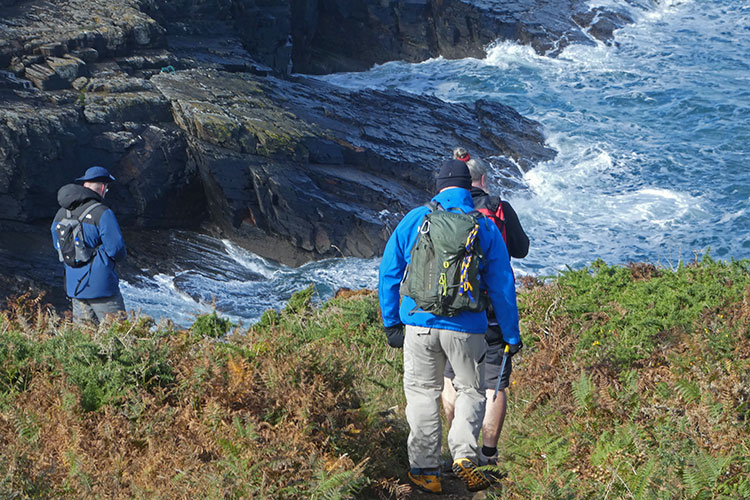
On Coast Path
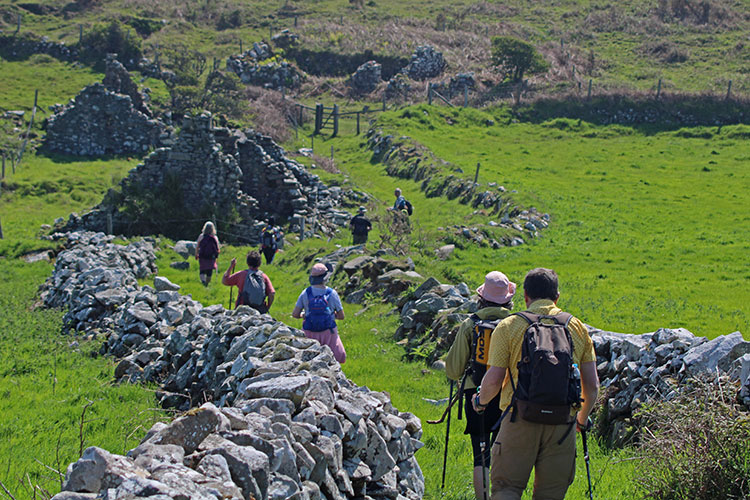
Maes y Mynydd
Road to New York
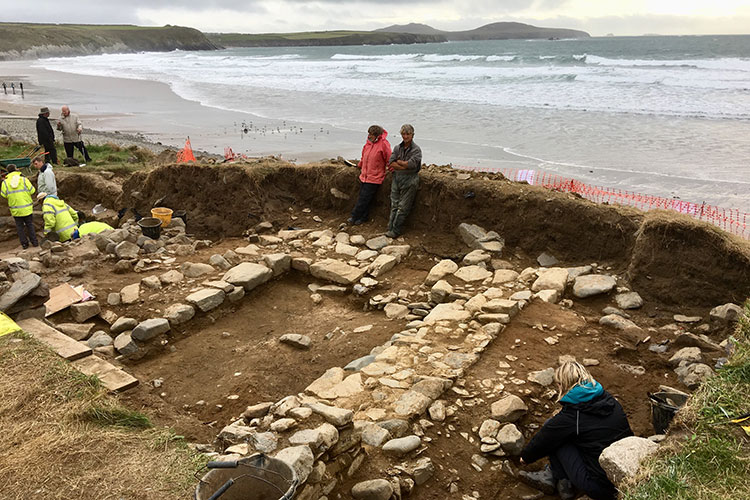
St Patrick's Chapel
During excavation
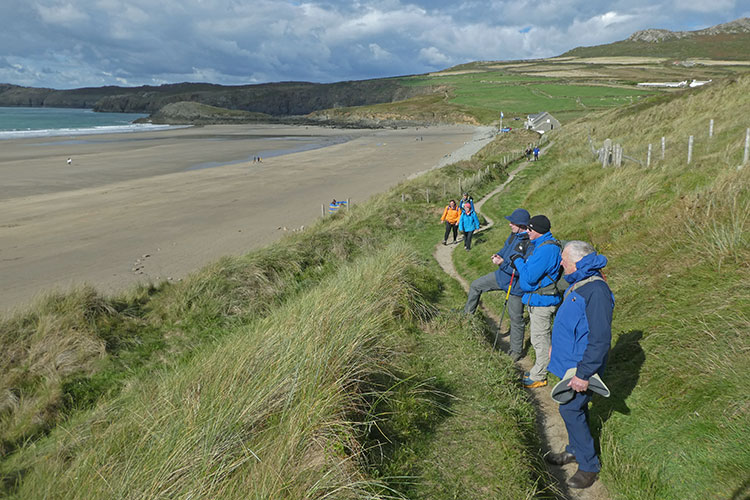
Whitesands Beach
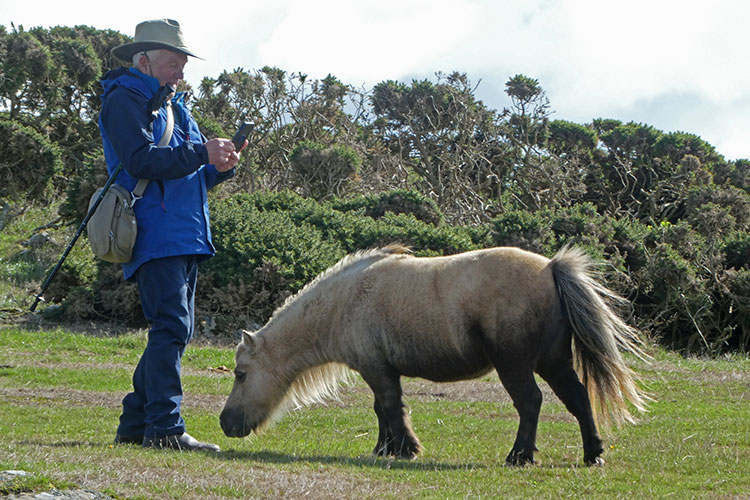
Inquisitive pony
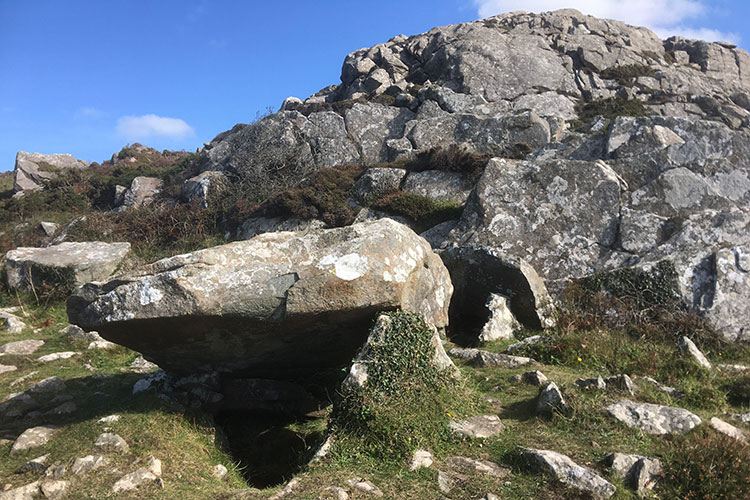
Cromlech on Carn Llidi
St Patrick’s Chapel
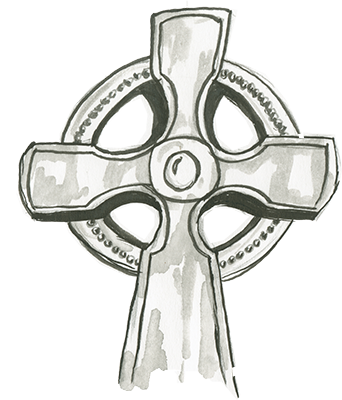
There is a tradition that St Patrick set sail from Porth Mawr (Whitesands beach) in 432 AD to convert Ireland to Christianity. The site of a Celtic chapel, dedicated to St Patrick, is located under a mound by the car park just to the east of the bay, at what is thought to have been the disembarkation point for pilgrims to St Davids Cathedral.
Excavation of the cemetery has revealed over 100 burials to date. Radiocarbon dating has shown that the cemetery was in use from the 6th century to the 11th century A.D. Furthermore, analysis of the skeletons at the University of Sheffield has revealed a mixed population of men, women and children of all ages. Graves were aligned east–west with the head to the west. In keeping with the Christian burial tradition there were no possessions buried with the bodies. Some of the skeletons were in cists – graves lined and capped with stone slabs, a burial tradition common across western Britain in the early medieval period.
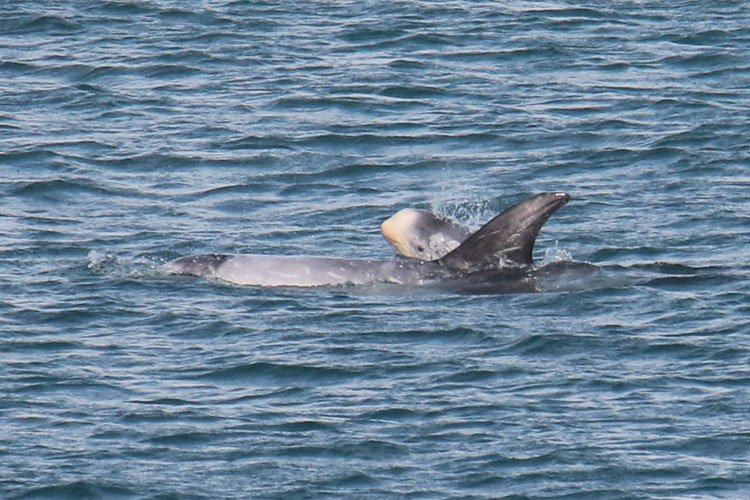
CETACEANS
The seas around Pembrokeshire are home to the Big 5 Cetacean Species which are the Common dolphin, Bottlenose dolphin, Harbour porpoise, Risso’s dolphin and Minke whales. Pictured here are Risso dolphins identifiable through having a broad head, no beak and a tall dorsal fin.
The Sea Trust recommend techniques for spotting cetaceans – scan the sea, looking for a flash of movement or colour (calmer seas make for easier spotting); keep looking at the spot; look for other signs such as accumulation of birds feeding on fish being pushed to the surface.
Image credit: Sea Trust, based in Goodwick at Ocean Lab on the harbour front.
Sign up for our Newsletter
Be the first to know about guided events being offered along the route and all the latest developments as we head for a pilgrimage launch in 2023.

